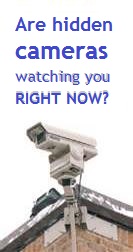Looking for Something?
| Word Tips |
| Excel Tips |
| Outlook Tips |
| PowerPoint Tips |
| Windows Tips |
| Hardware Tips |
| Internet Tips |

Pick a Tip:
| < prev | next > | |||
|---|---|---|---|---|
| 1 | 2 | 3 | 4 | 5 |
| 6 | 7 | 8 | 9 | 10 |
| 11 | 12 | 13 | 14 | 15 |
| 16 | 17 | 18 | 19 | 20 |
| 21 | 22 | 23 | 24 | 25 |
| 26 | 27 | 28 | 29 | 30 |
| 31 | 32 | 33 | 34 | 35 |
| 36 | 37 | 38 | 39 | 40 |
| 41 | 42 | 43 | 44 | 45 |
| 46 | 47 | 48 | 49 | 50 |
| 51 | 52 | 53 | 54 | 55 |
| 56 | 57 | 58 | 59 | 60 |
| 61 | 62 | 63 | 64 | 65 |
| 66 | 67 | 68 | 69 | 70 |
| 71 | 72 | 73 | 74 | 75 |
| 76 | 77 | 78 | 79 | 80 |
| 81 | 82 | 83 | 84 | 85 |
| 86 | 87 | 88 | 89 | 90 |
| 91 | 92 | 93 | 94 | 95 |
| 96 | 97 | 98 | 99 | 100 |
| 101 | 102 | 103 | 104 | 105 |
| 106 | 107 | 108 | 109 | 110 |
| 111 | 112 | 113 | 114 | 115 |
| 116 | 117 | 118 | 119 | 120 |
| 121 | 122 | 123 | 124 | 125 |
| 126 | 127 | 128 | 129 | 130 |
| 131 | 132 | 133 | 134 | 135 |
| 136 | 137 | 138 | 139 | 140 |
| 141 | 142 | 143 | 144 | 145 |
| 146 | 147 | 148 | 149 | 150 |
| 151 | 152 | 153 | 154 | 155 |
| 156 | 157 | 158 | 159 | 160 |
| 161 | 162 | 163 | 164 | 165 |
| 166 | 167 | 168 | 169 | 170 |
| 171 | 172 | 173 | 174 | 175 |
| 176 | 177 | 178 | 179 | 180 |
Technology Tip Number 10
|
|
|---|---|
So you’re reading a student’s essay and you’re shocked! It’s outstanding, exactly what you wanted to see. Unfortunately some things are just too good to be true. Your student might have just become one of the millions of kids each year who choose to copy a paper (or parts of a paper) off the internet rather than do their own work. You may have just caught a plagiarist. But how do you prove it? Consider the definition for plagiarism that I have listed below:
Let's say a student just turned this definition in to you and you were concerned that this wasn’t their work. Let's say you suspect they just copied and pasted this definition from the internet. Here’s the easy way to catch a plagiarist. Go tohttp://www.google.com and type a phrase or sentence from the suspected work into Google in quotes, like this: Click “Google Search” and if you’re right you’ll find the exact webpage the suspected plagiarist pilfered their work from. And your students thought you’d Additional Information: If you're looking for a more sophisticated way to check a student's work against the internet try this website: http://www.doccop.com/. DOC Cop claims to compare the submitted work to the internet and it provides a report that details the correlations and matches between the submitted document and the web. There are some fees involved but you can do a paragraph check for free: http://www.doccop.com/paragraph_check.html Here are some additional readings on the topic: To Catch a Plagiarist, by Sally Feldman, Times Higher Education in the United Kingdom. Researching English Papers Online, by Denis G. Jerz, Associate Professor at Seton Hill University in Pennsylvania. Plagiarism.org - The online resource for people concerned about internet plagiarism. |
|
PRACTICE ACTIVITY: Try finding the website I copied the definition for plagiarism from. If you can’t find it I have listed the webpage below under “Works Cited” TO KEEP ON LEARNING: Just as students can use technology to cheat educators have to know how to use technology to catch them. To learn more about using technology to catch plagiarists try searching the internet for: Plagiarism |
|
Looking for Something? |


